Fauvism received its name in 1905. Born within French painting at the turn of the century, the name Fauvists (Wild beasts) proved so appropriate that within just a few days it was taken up by the press. Since then, the names of Matisse, Vlaminck, Van Dongen, Puy, Marquet, and few others were associated with the term.

Henri Matisse, The Dance, 1909-1910. Oil on canvas, 260 x 391 cm.
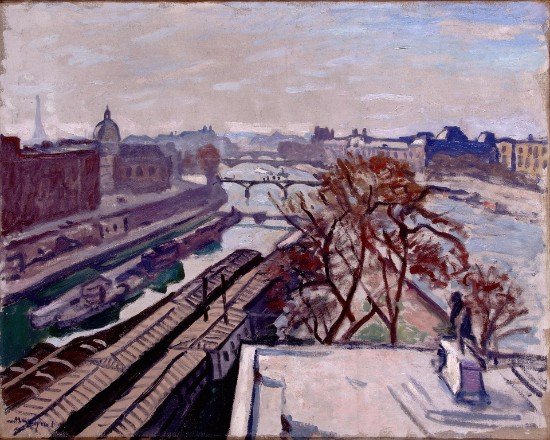
Albert Marquet, View of the Seine and the Monument to Henri IV, c. 1906. Oil on canvas, 65.5 x 81 cm.
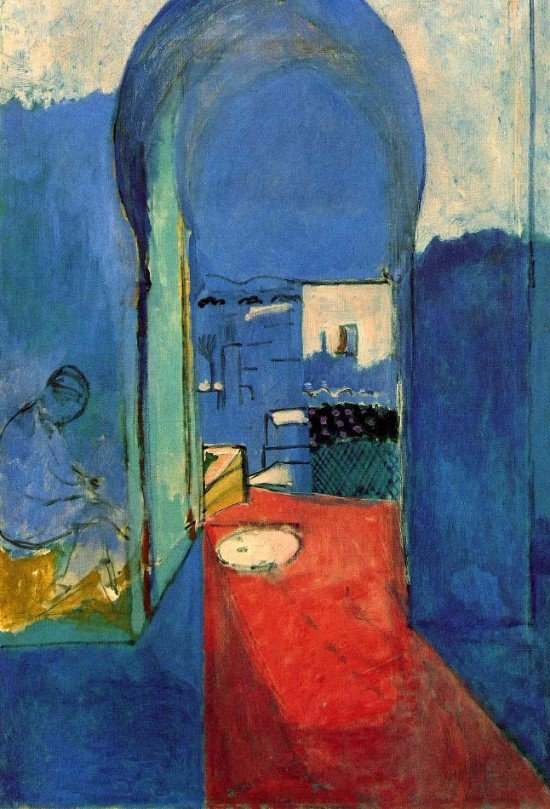
Henri Matisse, Entrance to the Casbah, 1912-1913. Right Panel of the Moroccan Triptych. Oil on canvas, 116 x 80 cm.
When the Fauvists started to exhibit their work, hostility began to emerge from the Impressionist Salon des Indepedents.
To Matisse and his friends, color prevailed over the rules and the Impressionist brush techniques. Color became the means of the Fauves to protest against being considered Impressionists.
Their paintings attained such an intensity and expressive power that all other means faded alongside them. Color became the banner of the Fauves, the symbol of the liberation of their painting from all constraints.
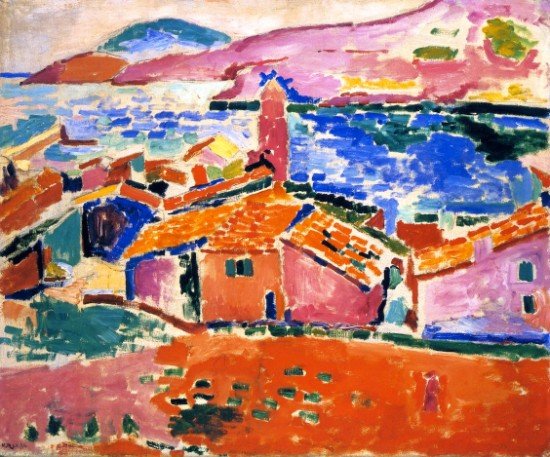
Henri Matisse, View of Collioure, c. 1905. Oil on canvas, 59.5 x 73 cm.
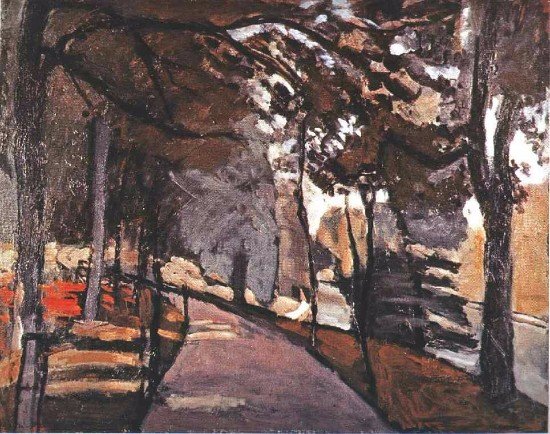
Henri Matisse, Path in the Bois de Boulogne, 1902. Oil on canvas, 65 x 81.5 cm.
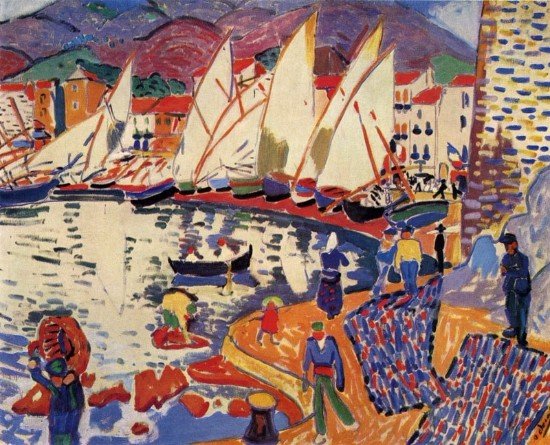
André Derain, Drying the Sails, 1905. Oil on canvas, 82 x 101 cm.
“We had no doctrine, none of us,” Van Dongen stated. “With the Impressionists you can use the term ‘impressionist school’, because they had certain principles. We did not have any; it seemed that their colors were a bit too dull, that’s all.”
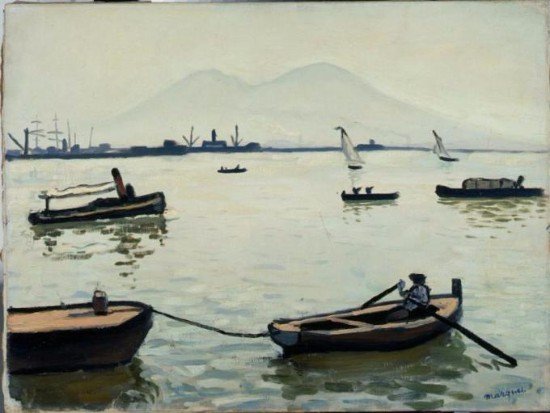
Albert Marquet, Vesuvius, c. 1909. Oil on canvas, 61 x 80 cm.
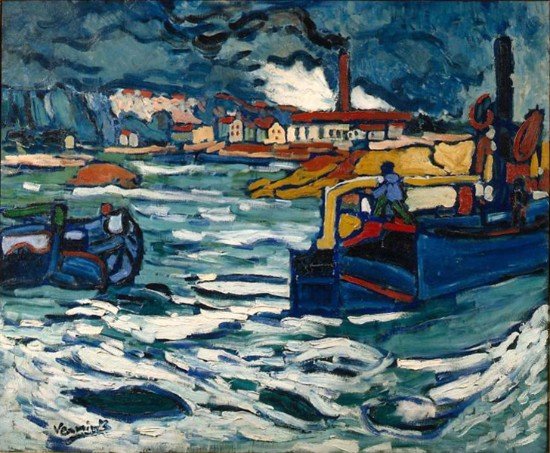
Maurice de Vlaminck, A Barge on the Seine River, 1905-1906. Oil on canvas, 81 x 100 cm.
“In the orchestra I was conducting,” Vlaminck wrote in his memoirs as he refers to his paintings, “I decided that in order to be heard I needed to use more colors. As if I would have instructed the musicians to blow the saxophone, cornet, and slide trombone with all their power. I made the tubes of paint burst upon my canvas and used nothing but vermilions, chromes, greens, and Prussian blue to growl out what I wanted to say.”
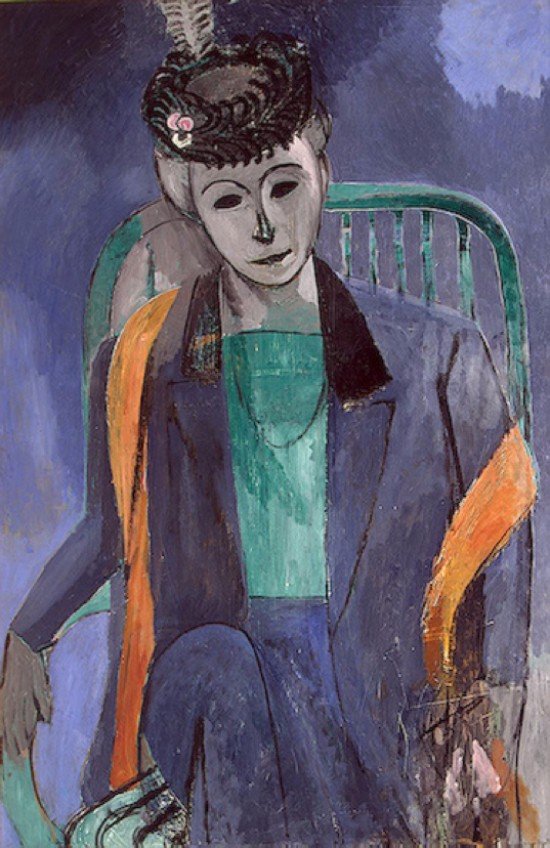
Henri Matisse, Portrait of Matisse’s Wife, 1913. Oil on canvas, 146 x 97.7 cm.
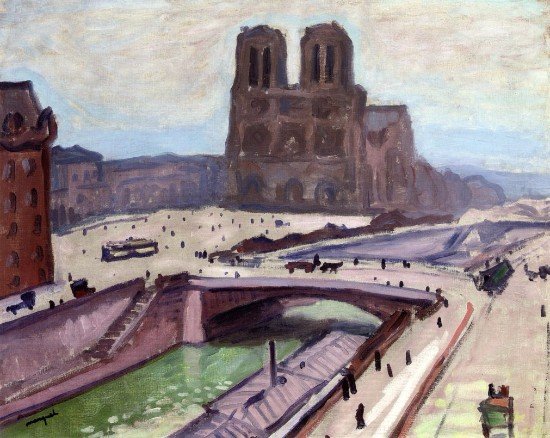
Albert Marquet, Rainy Day. Notre Dame du Paris, 1910. Oil on canvas, 81 x 66 cm.
Fauvism gathered interest alongside the early events of the 20th century — a century full of new complex machinery, the most savage of wars, and growing violence against nature and man. Fauvist painting were this "alter-version" of the early 20th century. The colors were used to offer a different idea of what cities and countrysides might look like if there were less wars and dark smoke factories.

Albert Marquet, The Pont Saint-Michel in Paris, The Quai des Augustins, 1908. Oil on canvas, 65 x 81 cm.
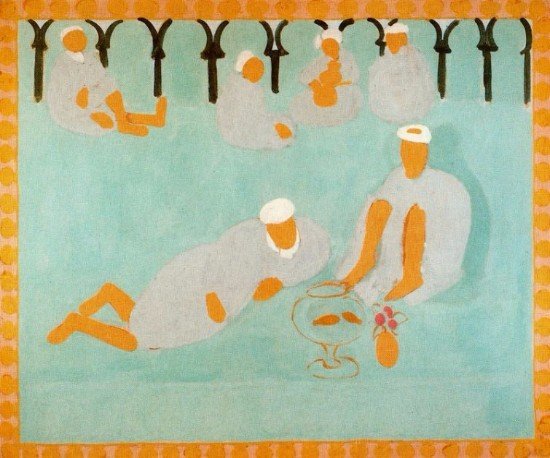
Henri Matisse, Arab Coffeehouse, 1913.Tempera on canvas, 176 x 210 cm.
In contrast to their Expressionists contemporaries, the "Fauves" colors carried optimism. “The goal we set ourselves to was happiness, happiness which we should consequently create,” artists used to say.
They understood that in order to create art, one must be endowed with a sense of joy. “We love life more than anything,” they confessed. “Oh! Life. It is perhaps even more beautiful than painting.”
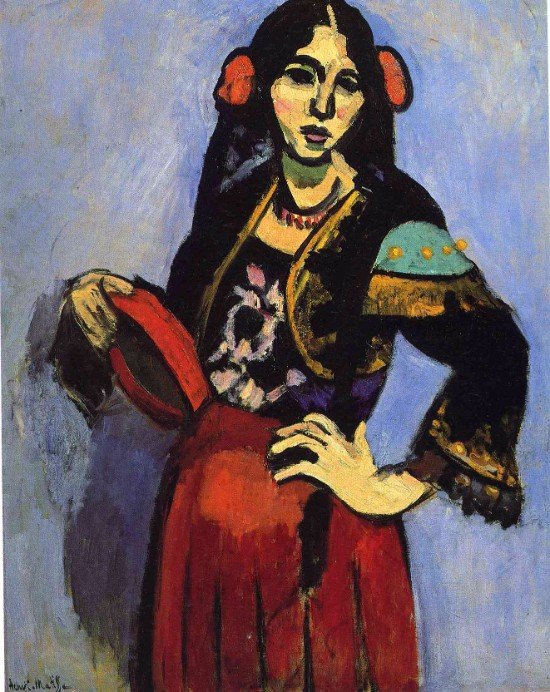
Henri Matisse, Spanish Girl with Tambourine, 1909. Oil on canvas, 92 x 73 cm.
Follow me for more on this Modern Art series.
https://steemit.com/@achraf7b
References & Additional Resources:

Hi friend, very good !!!!!
You would help me with a vote in my Blog., Thanks !!! ;
Lovely post. Upvoted and followed.